The results are in for the top christmas adverts of 2015

If my recent posts haven’t managed to give it away already, I am a huge fan of this time of year. Christmas is my favourite holiday – its the time when I get to come home, relax and spend time with my family. The build up to christmas day is an exciting time, and when the christmas adverts start to appear on TV I know it’s time to start getting excited. The big competition for this years crown as the king of the christmas adverts drew to a close yesterday, and a list was released with the top nine adverts based on Youtube views up until 12pm on the 21st of December.
The list features nine christmas adverts released in the UK this year, but before going into those I want to mention a personal favourite of mine that wasn’t on the list…
VODAFONE – TERRY THE TURKEY
Vodafone opted for a hilarious advert this year. A family rear a turkey for christmas dinner, only to become so attached to it that it joins them at the table on the day for a nut roast as Westlife’s Flying Without Wings transports your soul to uncharted heights. The idea is to “get closer to the ones you love this christmas” and presumably to also realise that turkeys can actually be quite cute (in a creepy kind of way). This advert has it all – cute(?) animals, drama, suspense and Westlife.
Moving onto the list, click on the links to see each brands christmas website…
9 – ASDA #BECAUSEITSCHRISTMAS
340,000 views
Verdict: There’s nothing wrong with Asda’s advert, but there also isn’t really anything that makes it stand out from the pack. It features a variety of christmassy scenarios, but the accompanying song – Sax by X Factor runner up Fleur East – ruins any attempt at a true festive feel created by the visuals. This is nothing against the song per se, but as upbeat as it may be it certainly detracts from the overall aim of the advert, and probably has a lot to do with why it ranked last despite being one of the first released, whole 54 days before christmas.
8 – LIDL: SCHOOL OF CHRISTMAS
520, 000 views
Verdict: I am a huge fan of Lidl’s advert and was surprised to see it come in eighth place (I would easily have it in the top five, at least). The advert features a ‘school of christmas’ which has a variety of classes teaching festive etiquette, from how to react to a sub-par gift to creating the perfect leftover sandwich. It’s a funny and slightly different take on christmas advertising, and it certainly fulfilled its function of being memorable – all in all a great effort from the German supermarket chain.
7 – ALDI #ALDIYOURFAVOURITETHINGS
600,000 views
Verdict: Just winning out ahead of its rival comes other German supermarket chain Aldi, who went for a festive take on the song My Favourite Things from The Sound of Music. It’s a nice idea that allows them to cram in a number of reasonably priced festive treats, but I personally found the song to be slightly grating and was prone to turning it off whenever it came on TV, probably the opposite of the desired effect.
6 – TESCO – 4 ADVERTS
660,000 views (average)
Verdict: Tesco went for a different approach this year, releasing a series of shorter seasonal adverts based around a family, played by Ruth Jones (Gavin & Stacey), Ben Miller and Will Close. All in all the segments didn’t prove to be overly popular, though I found some of them to be pretty amusing – particularly The Final Shop, the latest one to come out. Other efforts were more cringe than funny, but Ruth Jones is so likeable that it is hard to say anything too bad about these adverts, plus Tesco should be commended for daring to do something a little different.
5 – WAITROSE #MAKESYOURCHRISTMAS
660,000 views
Verdict: This one falls pretty much into the same category as the Asda one for me, though Waitrose admittedly has a much better version of the same idea. The advert features christmas scenarios and poses the question – what makes your christmas? It also features celebrity chef Heston Blumenthal, who has endorsed the supermarket chain since 2010. It apparently cost almost £1 million to make (read about it in this article for The Telegraph), and whilst it does have a very polished look about it, its hard to see where all that money could have gone. It’s a decent effort, just not a memorable one.
4 – ALDI SPOOF JOHN LEWIS
2 million views
Verdict: Talk about cheeky marketing! As if it wasn’t enough to deface a musical classic, Aldi then had the gall to take on John Lewis, the grandaddy of all christmas ads, by taking their price comparison format and applying it to a spoof of the Man on the Moon advert (more on that later). It is admittedly pretty funny, but at 2 million views to John Lewis’ 23 million, the joke might be one them.
3 – M&S #THEARTOFCHRISTMAS
2.5 million views
Verdict: This is probably the only advert that I really actively dislike on the list. Sure, the Aldi song one was irritating but it was a nice concept that didn’t pan out upon execution. This offering from M&S however, is just plain awful. It’s a festive take on the chains recent line of #theartof ads, and it is certainly something different, but it just doesn’t sit right with me. It’s not christmassy enough – where are the cute animals and soppy stories? THAT’S what we want, not whatever this is. It just feels like overcompensation to me, and using what is potentially the most overplayed song of the century doesn’t help – Uptown Funk is not christmas soundtrack material.
2 – JOHN LEWIS: MAN ON THE MOON
23 million views
Verdict: Onto the big dogs now – John Lewis moved away from cute animals this year and went for another area that is sure to tug at the heartstrings with the elderly. Teaming up with Age UK, the department store giants urged us to “show someone they’re loved this christmas” after telling the story of the lonely man on the moon to Half the World Away as sung by Norwegian artist Aurora. The advert reportedly cost £1 million and was just one component in a £7 million campaign, with profits from a mug, gift tag and card on sale in stores going to Age UK. Coincidentally, christmas day will feature a full moon, which is a nice little touch to add to your enjoyment of this wonderful advert.
1 – SAINSBURY’S: MOG’S CHRISTMAS CALAMITY
26 million views
Verdict: As good as John Lewis’ effort was this year, there could be no other winner. Sainbsbury’s, in a stroke of complete genius, brought back Judith Kerr’s beloved Mog the cat in an adorable three minute advert narrated by none other than Emma Thompson. It is a true embodiment of everything one would want in a festive ad, and it was released to public acclaim on the 12th of November. A book – Mog’s Christmas Calamity, and a cuddly toy were also released, with proceeds going to Save the Children. A great idea and an even better cause, Sainsbury’s are the worthy winner of the 2015 battle of the christmas adverts.
What was your favourite christmas advert of 2015? Let me know in the comments section!
If you would like to find out more about Age UK or Save the Children, or if you would like to donate, click the links above to be taken to their respective websites.















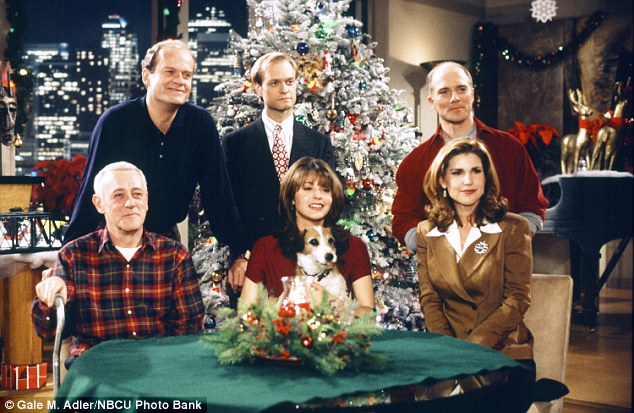
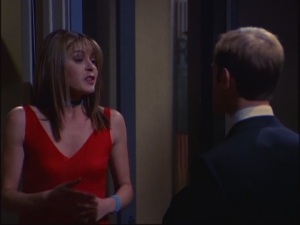
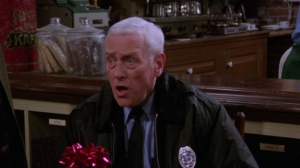

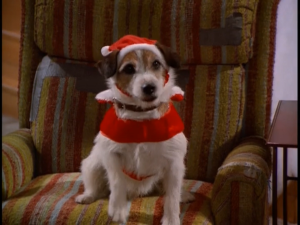

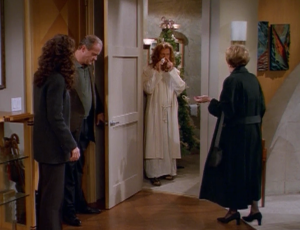
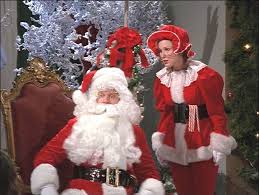

 Who can believe it, it’s finally over. After 12 years and nine fantastic series, Peep Show finally drew to a close on Channel 4 last night, marking the end of an era as we bid goodbye to the El Dude Brothers, this time for good.
Who can believe it, it’s finally over. After 12 years and nine fantastic series, Peep Show finally drew to a close on Channel 4 last night, marking the end of an era as we bid goodbye to the El Dude Brothers, this time for good. Mark on the other hand looks like he might be getting his life on track. Granted, he gets fired by Johnson and replaced by old rival Jeff, naturally all at the hands of Jeremy, but it also looks like he might actually ride off into the sunset with April. April was the one all along, and it seems like she might be able to overlook the fact that Mark tried to bury Sophie in a ballpit last week. But alas, this is Peep Show, and there was no way that anyone was going to end up happy. Sitcoms like Friends were all about wrapping things up nicely and allowing everyone their happy ending, but to do so with Mark and Jez would be to go against the grain of what the show was about all along.
Mark on the other hand looks like he might be getting his life on track. Granted, he gets fired by Johnson and replaced by old rival Jeff, naturally all at the hands of Jeremy, but it also looks like he might actually ride off into the sunset with April. April was the one all along, and it seems like she might be able to overlook the fact that Mark tried to bury Sophie in a ballpit last week. But alas, this is Peep Show, and there was no way that anyone was going to end up happy. Sitcoms like Friends were all about wrapping things up nicely and allowing everyone their happy ending, but to do so with Mark and Jez would be to go against the grain of what the show was about all along. Richard Curtis’ ensemble romantic comedy Love Actually came out in 2004, a full 11 years ago, meaning it has now been out long enough to accrue the title ‘Christmas classic’. I indulge in multiple viewings of this film – which kickstarted a trend in the US where every holiday got itself an all-star ensemble (New Years Eve, Valentines Day etc) – and whilst it may have its critics, I am sure I am not alone in holding it as a festive favourite. The film has a total of nine storylines interweaved with one another, and I have taken it upon myself to rank them below…
Richard Curtis’ ensemble romantic comedy Love Actually came out in 2004, a full 11 years ago, meaning it has now been out long enough to accrue the title ‘Christmas classic’. I indulge in multiple viewings of this film – which kickstarted a trend in the US where every holiday got itself an all-star ensemble (New Years Eve, Valentines Day etc) – and whilst it may have its critics, I am sure I am not alone in holding it as a festive favourite. The film has a total of nine storylines interweaved with one another, and I have taken it upon myself to rank them below… Rufus (Rowan Atkinson) is a department store employee who firsts shows up wrapping a necklace for Harry (Alan Rickman), with his over-enthusiasm for providing a premium service raising laughs. He then shows up later at the airport, providing a distraction which allows Sam (Thomas Sangster) to slip through security. His supporting role has not been included due to the fact that he is a lone character who does not have a storyline of his own, though he is still extremely important to the overarching plot.
Rufus (Rowan Atkinson) is a department store employee who firsts shows up wrapping a necklace for Harry (Alan Rickman), with his over-enthusiasm for providing a premium service raising laughs. He then shows up later at the airport, providing a distraction which allows Sam (Thomas Sangster) to slip through security. His supporting role has not been included due to the fact that he is a lone character who does not have a storyline of his own, though he is still extremely important to the overarching plot. The story: Colin (Kris Marshall) is a goofy English waiter who is having no luck in his endless attempts to win over various women. He tells his friend Tony (Abdul Salis) that he it is British woman that he is undesirable to, and that if he went to America he would have more success. Colin then announces that he is in fact going to the US, and when he lands in Milwaukee he almost immediately becomes acquainted with three women – Stacey (Ivana Millecevic), Jeannie (January Jones) and Carol Ann (Elisha Cuthbert). The girls invite him to stay with them and their room-mate Harriet (Shannon Elizabeth). In the epilogue Colin is seen returning via Heathrow with Harriet, who has brought her sister (Denise Richards) for the stunned Tony.
The story: Colin (Kris Marshall) is a goofy English waiter who is having no luck in his endless attempts to win over various women. He tells his friend Tony (Abdul Salis) that he it is British woman that he is undesirable to, and that if he went to America he would have more success. Colin then announces that he is in fact going to the US, and when he lands in Milwaukee he almost immediately becomes acquainted with three women – Stacey (Ivana Millecevic), Jeannie (January Jones) and Carol Ann (Elisha Cuthbert). The girls invite him to stay with them and their room-mate Harriet (Shannon Elizabeth). In the epilogue Colin is seen returning via Heathrow with Harriet, who has brought her sister (Denise Richards) for the stunned Tony. The story: Sarah (Laura Linney) is an American woman working at a design company (run by Harry) who has been in love with co-worker Karl (Rodrigo Santoro) for years. Harry encourages her to make a move, and the pair finally kiss after dancing together at the office christmas party. They go home together, but are disturbed by Sarah’s phone ringing. It is her brother, Michael (Michael Fitzgerald), who stays in a mental health facility. Sarah is unwilling to put Karl before her brother, and goes to visit Michael. Karl and Sarah are work late on Christmas Eve, and it becomes clear that they won’t get together. Sarah is last seen celebrating Christmas with Michael.
The story: Sarah (Laura Linney) is an American woman working at a design company (run by Harry) who has been in love with co-worker Karl (Rodrigo Santoro) for years. Harry encourages her to make a move, and the pair finally kiss after dancing together at the office christmas party. They go home together, but are disturbed by Sarah’s phone ringing. It is her brother, Michael (Michael Fitzgerald), who stays in a mental health facility. Sarah is unwilling to put Karl before her brother, and goes to visit Michael. Karl and Sarah are work late on Christmas Eve, and it becomes clear that they won’t get together. Sarah is last seen celebrating Christmas with Michael. The story: Daniel (Liam Neeson) is mourning the loss of his wife Joanna, as well as trying to be step-father to her son Sam (Thomas Sangster). Sam reveals that he is in love with an American classmate, also named Joanna, and learns to play the drums so that he can accompany her at the school concert. Daniel then helps him chase her to the airport (Joanna is going back to America), and he meets another parent Carol (Claudia Schiffer) in the process. The epilogue shows Carol and Daniel waiting with Sam to meet Joanna, who has returned from America.
The story: Daniel (Liam Neeson) is mourning the loss of his wife Joanna, as well as trying to be step-father to her son Sam (Thomas Sangster). Sam reveals that he is in love with an American classmate, also named Joanna, and learns to play the drums so that he can accompany her at the school concert. Daniel then helps him chase her to the airport (Joanna is going back to America), and he meets another parent Carol (Claudia Schiffer) in the process. The epilogue shows Carol and Daniel waiting with Sam to meet Joanna, who has returned from America. The story: Harry (Alan Rickman) and Karen (Emma Thompson) are a married couple who have two children. Harry manages a design company whilst Karen stays home with the children. Mia (Hieke Makatsch) is Harry’s new secretary, who makes it increasingly obvious that she is interested in Harry. He buys her an expensive necklace, which Karen finds and excitedly thinks is for her. She is upset when she instead receives a Joni Mitchell CD from Harry, and she finds it hard to to hide her upset. She later confronts Harry and tells him that he has made a fool of her and her life. The family are later seen greeting Harry at the airport in the epilogue, where things still seem slightly tense between him and Karen.
The story: Harry (Alan Rickman) and Karen (Emma Thompson) are a married couple who have two children. Harry manages a design company whilst Karen stays home with the children. Mia (Hieke Makatsch) is Harry’s new secretary, who makes it increasingly obvious that she is interested in Harry. He buys her an expensive necklace, which Karen finds and excitedly thinks is for her. She is upset when she instead receives a Joni Mitchell CD from Harry, and she finds it hard to to hide her upset. She later confronts Harry and tells him that he has made a fool of her and her life. The family are later seen greeting Harry at the airport in the epilogue, where things still seem slightly tense between him and Karen. The story: Juliet (Kiera Knightly) and Peter (Chiwetel Ejiofor) get married, with best man Mark (Andrew Lincoln) organising a surprise choir and filming much of the day. It is later revealed that Mark generally avoids or acts coldly towards Juliet, who tries to break the ice when she goes over to get his footage of the wedding. Mark is reluctant to show her the footage, and when she watches it she sees that it is all focused on her. Mark hastily leaves, saying he acts the way he does due to “self-preservation”. On Christmas Eve Mark shows up at Juliet and Mark’s flat and shows Juliet via cue cards that he is in love with her, but does not want or expect anything from her. She gives him a friendly kiss, and he states “enough, enough now” to himself. The trio are then shown in the epilogue and things appear less awkward between Mark and Juliet.
The story: Juliet (Kiera Knightly) and Peter (Chiwetel Ejiofor) get married, with best man Mark (Andrew Lincoln) organising a surprise choir and filming much of the day. It is later revealed that Mark generally avoids or acts coldly towards Juliet, who tries to break the ice when she goes over to get his footage of the wedding. Mark is reluctant to show her the footage, and when she watches it she sees that it is all focused on her. Mark hastily leaves, saying he acts the way he does due to “self-preservation”. On Christmas Eve Mark shows up at Juliet and Mark’s flat and shows Juliet via cue cards that he is in love with her, but does not want or expect anything from her. She gives him a friendly kiss, and he states “enough, enough now” to himself. The trio are then shown in the epilogue and things appear less awkward between Mark and Juliet. The story: Jamie (Colin Firth) returns from Juliet and Peter’s wedding to discover that his girlfriend (Sienna Guillory) has been cheating on him with his brother. He departs to a French cottage to write and he meets housekeeper Aurélia, who is Portuguese and doesn’t speak any English. In spite of the language barrier, there is a spark between the pair and they begin to fall in love. Both are upset when it comes time for them to go back to their respective countries. Jamie then learns Portuguese and goes to find Aurélia on Christmas Eve, eventually proposing to her in front of the town. She says yes, revealing that she had been learning English. The epilogue shows them meeting Juliet, Peter and Mark at the airport.
The story: Jamie (Colin Firth) returns from Juliet and Peter’s wedding to discover that his girlfriend (Sienna Guillory) has been cheating on him with his brother. He departs to a French cottage to write and he meets housekeeper Aurélia, who is Portuguese and doesn’t speak any English. In spite of the language barrier, there is a spark between the pair and they begin to fall in love. Both are upset when it comes time for them to go back to their respective countries. Jamie then learns Portuguese and goes to find Aurélia on Christmas Eve, eventually proposing to her in front of the town. She says yes, revealing that she had been learning English. The epilogue shows them meeting Juliet, Peter and Mark at the airport. The story: David (Hugh Grant) is the newly elected Prime Minister and when he moves into 10 Downing Street he meets one of his household staff, Natalie (Martine McCutcheon). There is an instant spark between them, but David chastises himself for liking her. The President of the US (Billy Bob Thornton) visits and David is led to believe that something untoward happened between the President and Natalie, leading him to make a defiant speech and also get Natalie moved from her position within the house. He later gets a christmas card from Natalie where she admits that it is him that she wanted all along, and he goes on a door to door search from her, eventually finding her and taking her to her brothers nativity play. The pair are then caught kissing backstage, and the epilogue shows Natalie greeting David at the airport as the press look on.
The story: David (Hugh Grant) is the newly elected Prime Minister and when he moves into 10 Downing Street he meets one of his household staff, Natalie (Martine McCutcheon). There is an instant spark between them, but David chastises himself for liking her. The President of the US (Billy Bob Thornton) visits and David is led to believe that something untoward happened between the President and Natalie, leading him to make a defiant speech and also get Natalie moved from her position within the house. He later gets a christmas card from Natalie where she admits that it is him that she wanted all along, and he goes on a door to door search from her, eventually finding her and taking her to her brothers nativity play. The pair are then caught kissing backstage, and the epilogue shows Natalie greeting David at the airport as the press look on. The story: John (Martin Freeman) and Judy (Joanna Page) are professional body doubles who are filming sex scenes for a film where Tony is the production assistant. They are comfortable with the work but are otherwise very shy talking to each other, and John eventually asks her on a date very tentatively. They go on a date and Judy tells John “all I want for Christmas is you!” after kissing him. They are then shown in the epilogue having gotten married.
The story: John (Martin Freeman) and Judy (Joanna Page) are professional body doubles who are filming sex scenes for a film where Tony is the production assistant. They are comfortable with the work but are otherwise very shy talking to each other, and John eventually asks her on a date very tentatively. They go on a date and Judy tells John “all I want for Christmas is you!” after kissing him. They are then shown in the epilogue having gotten married. The story: Ageing rocker Billy Mack (Bill Nighy) is trying to stage a comeback with the help of his manager Joe (Gregor Fisher). He has released a festive cover of The Troggs’ Love is All Around entitled Christmas is All Around. After a string of controversial media appearances where Billy Mack is increasingly inappropriate, he becomes the surprise Christmas Number One and goes to celebrate with a party at Elton John’s house. He then leaves the party to spend time with Joe, who he admits is the (platonic) “love of my life”.
The story: Ageing rocker Billy Mack (Bill Nighy) is trying to stage a comeback with the help of his manager Joe (Gregor Fisher). He has released a festive cover of The Troggs’ Love is All Around entitled Christmas is All Around. After a string of controversial media appearances where Billy Mack is increasingly inappropriate, he becomes the surprise Christmas Number One and goes to celebrate with a party at Elton John’s house. He then leaves the party to spend time with Joe, who he admits is the (platonic) “love of my life”.
 Linehan was already well known in the sitcom world due to his hugely successful shows Father Ted (1995-1998) and Black Books (2000-2004), and by his
Linehan was already well known in the sitcom world due to his hugely successful shows Father Ted (1995-1998) and Black Books (2000-2004), and by his  Chris O’Dowd, who played the loveable Roy (a character that Linehan said was based on himself, but was not originally intended to be Irish), has possibly been busy since his days on The IT Crowd, working consistently both in the UK and US. He has had supporting roles in a number of films including Thor: The Dark World (2013), St. Vincent (2014) and Cuban Fury (2014). He had a more significant supporting role in this years The Program, playing David Walsh – a journalist who believed in Lance Armstrong doping allegations for years before it became public knowledge.
Chris O’Dowd, who played the loveable Roy (a character that Linehan said was based on himself, but was not originally intended to be Irish), has possibly been busy since his days on The IT Crowd, working consistently both in the UK and US. He has had supporting roles in a number of films including Thor: The Dark World (2013), St. Vincent (2014) and Cuban Fury (2014). He had a more significant supporting role in this years The Program, playing David Walsh – a journalist who believed in Lance Armstrong doping allegations for years before it became public knowledge. Richard Ayoade, who played the eccentric Maurice ‘Moss’ has also worked fairly consistently since the end of the series. He has written and directed two feature films – The Double (2013) and Submarine (2010). He took over presentation duties of factual show Gadget Man from previous host Stephen Fry in 2012, with the fourth series beginning in June this year. He has also appeared in 6 episodes of Noel Fielding’s Comedy Show (2012-2014) and voiced Mr. Pickles in The Boxtrolls (2014).
Richard Ayoade, who played the eccentric Maurice ‘Moss’ has also worked fairly consistently since the end of the series. He has written and directed two feature films – The Double (2013) and Submarine (2010). He took over presentation duties of factual show Gadget Man from previous host Stephen Fry in 2012, with the fourth series beginning in June this year. He has also appeared in 6 episodes of Noel Fielding’s Comedy Show (2012-2014) and voiced Mr. Pickles in The Boxtrolls (2014). Katherine Parkinson completed the central trio, playing the painfully tech illiterate head of IT and ‘relationship manager’ Jen Barber. She has worked consistently since 2005, generally in guest roles on television series as well as occasional supporting roles in films.
Katherine Parkinson completed the central trio, playing the painfully tech illiterate head of IT and ‘relationship manager’ Jen Barber. She has worked consistently since 2005, generally in guest roles on television series as well as occasional supporting roles in films. Matt Berry portrayed the hilariously inappropriate Douglas Reynholm from series two to the final episode. The role of his father, Denholm (Chris Morris) was originally written for him, but Berry was unavailable when the first series was being shot. This allowed for the entry of his character in series two and arguably only made the show better – bringing in the comedic talents of Chris Morris too.
Matt Berry portrayed the hilariously inappropriate Douglas Reynholm from series two to the final episode. The role of his father, Denholm (Chris Morris) was originally written for him, but Berry was unavailable when the first series was being shot. This allowed for the entry of his character in series two and arguably only made the show better – bringing in the comedic talents of Chris Morris too. Chris Morris played Denholm Reynholm, the hilariously intense boss of Reynholm Industries for the first and part of the second series. He had a small role in The Double (2013) and wrote Four Lions (2010), narrating over the end credits. He is also credited with acting in one episode of Veep in 2012, as well as directing four episodes between 2012 and 2014 and producing three. Furthermore, he wrote an episode of Black Mirror in 2013.
Chris Morris played Denholm Reynholm, the hilariously intense boss of Reynholm Industries for the first and part of the second series. He had a small role in The Double (2013) and wrote Four Lions (2010), narrating over the end credits. He is also credited with acting in one episode of Veep in 2012, as well as directing four episodes between 2012 and 2014 and producing three. Furthermore, he wrote an episode of Black Mirror in 2013.

 This can often lead to misleading marketing material that more often than not doesn’t actually represent the product that is being sold to us. This can work both ways, either selling an indie film as more mainstream fare (Me, Earl and the Dying Girl earlier this year was very much marketed as a YA adaption in the vein of The Fault in Our Stars in spite of being a vastly different film, for example) or tricking audiences into seeing a generic flick.
This can often lead to misleading marketing material that more often than not doesn’t actually represent the product that is being sold to us. This can work both ways, either selling an indie film as more mainstream fare (Me, Earl and the Dying Girl earlier this year was very much marketed as a YA adaption in the vein of The Fault in Our Stars in spite of being a vastly different film, for example) or tricking audiences into seeing a generic flick.
 Kramer . Vs. Kramer (1979) – shows a happy family even though the film is the depiction of the breaking up of said family
Kramer . Vs. Kramer (1979) – shows a happy family even though the film is the depiction of the breaking up of said family
 Films such as Trainspotting (1994) retained their book titles, but no longer make sense in the context of the film. The book contains a line which alludes to the act of trainspotting and also acts as character development for the pyschotic Begbie, who was immortalised on screen by Robert Carlyle. However slight this alluding to the title was, it was still present, and no such instance occurs in the film, essentially making the title obsolete. This did nothing to impact the overall quality of the movie however, and it was going to be a hard task for the marketing strategists to come up with a title for a film about Edinburgh based heroin addicts and sociopaths.
Films such as Trainspotting (1994) retained their book titles, but no longer make sense in the context of the film. The book contains a line which alludes to the act of trainspotting and also acts as character development for the pyschotic Begbie, who was immortalised on screen by Robert Carlyle. However slight this alluding to the title was, it was still present, and no such instance occurs in the film, essentially making the title obsolete. This did nothing to impact the overall quality of the movie however, and it was going to be a hard task for the marketing strategists to come up with a title for a film about Edinburgh based heroin addicts and sociopaths. Harold and Kumar go to White Castle (US) became Harold and Kumar get the Munchies (UK) due to the lack of White Castle fast food chain in the UK.
Harold and Kumar go to White Castle (US) became Harold and Kumar get the Munchies (UK) due to the lack of White Castle fast food chain in the UK.
 Leprechaun (1993) – The DVD release of this horror film capitalised on the fact that Jennifer Aniston, who has a relatively minor role in the movie, had struck gold as Rachel Green on Friends (1994-2004), and she is featured on the cover design.
Leprechaun (1993) – The DVD release of this horror film capitalised on the fact that Jennifer Aniston, who has a relatively minor role in the movie, had struck gold as Rachel Green on Friends (1994-2004), and she is featured on the cover design.
 Nightmare Before Christmas (1993) – Generally marketed as Tim Burton’s Nightmare Before Christmas. Whilst the king of kook is responsible for the concept and is credited as a producer, the film was actually directed by Henry Selik.
Nightmare Before Christmas (1993) – Generally marketed as Tim Burton’s Nightmare Before Christmas. Whilst the king of kook is responsible for the concept and is credited as a producer, the film was actually directed by Henry Selik.
 Iron Man 3 (2013) – the one that left comic book villains the world over bitter, the trailer advertised famous Iron Man foe The Mandarin as the big bad, only to pull a bait and switch and reveal Ben Kingsley’s character to be an drunken actor.
Iron Man 3 (2013) – the one that left comic book villains the world over bitter, the trailer advertised famous Iron Man foe The Mandarin as the big bad, only to pull a bait and switch and reveal Ben Kingsley’s character to be an drunken actor.